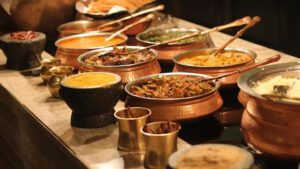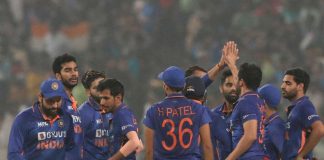DECEMBER 23, 2023

Our undeniable fascination with everything extreme is evident in the following that Indian mukbangers have. In the Korean tradition of eating humongous amounts of food on camera for people to watch, comment on and, perhaps, derive an inexplicable satisfaction from, Indian YouTubers hit incredible numbers with their mukbang videos.
A 12-minute video of someone eating buckets of mutton, chicken and egg curries? 31mn views.
An 11-minute video of an entire village making (and then eating) a gigantic vessel of Peshawari chawal? 83mn views.
One Chinese man competing with 15 Indian people in a noodle-eating contest? 62mn views.
This pull towards the binge is centrestage again when food delivery platforms put up their yearly wraps. The Swiggy year-end wrap, ‘How India Swiggy’d 2023’, has some astounding numbers about the year that went by.
- One person in Jhansi placed an order with 269 items.
- Someone in Hyderabad spent Rs 6 lakh on idlis.
- A household in Bhubaneswar ordered 207 pizzas in one day.
- On Valentine’s Day, people were ordering 271 cakes a minute.
- And all through the year, people ordered 2.5 biryanis every second.
But there is more to these patterns than the spectacular binges that people indulge in. For that data, we tapped into another source.
Six months ago, in June, Swiggy’s competitor, Zomato, also launched a data insights platform. You can enter the name of a dish or a cuisine and get the data on where, when and at what price people are buying their food online.
We used the insights on Swiggy and the data on Zomato to identify food patterns that say much more about our culture than politicians, social influencers or commentators choose to.
The caveat, of course, is that this data is restricted to an upwardly mobile, mostly-urban demographic. So, the predominance of one city over another would in most cases have to do with purchasing power alone. But we don’t isolate the economics from the food because:
- We don’t want to underplay the role money plays in the kind of food people eat.
- When a city’s food preferences stand out despite the economics, it is worth commenting on.
Year after year, biryani has been the great equaliser of the Indian food scene.
It was the most ordered dish on Swiggy for the eighth consecutive year and was the second highest trending dish on Zomato.
Some really out-there choices seemed to be the favourites in Kerala — where the demand for Chinese biryani and barbecue biryani was the highest — and in Telangana, which ordered manchurian biryani most often.
The biggest demand for Punjabi biryani came from Andhra Pradesh and that for Kolkata biryani was in Karnataka.
But if you had to guess where the demand for Hyderabadi biryani and Lucknowi biryani was the highest, what would you say?
Delhi?
Mumbai?
Bengaluru?
Nope.
It was Gujarat, where civic bodies have been trying to ban non-vegetarian food from city streets.
Courtesy: TOI / PTI

































































































